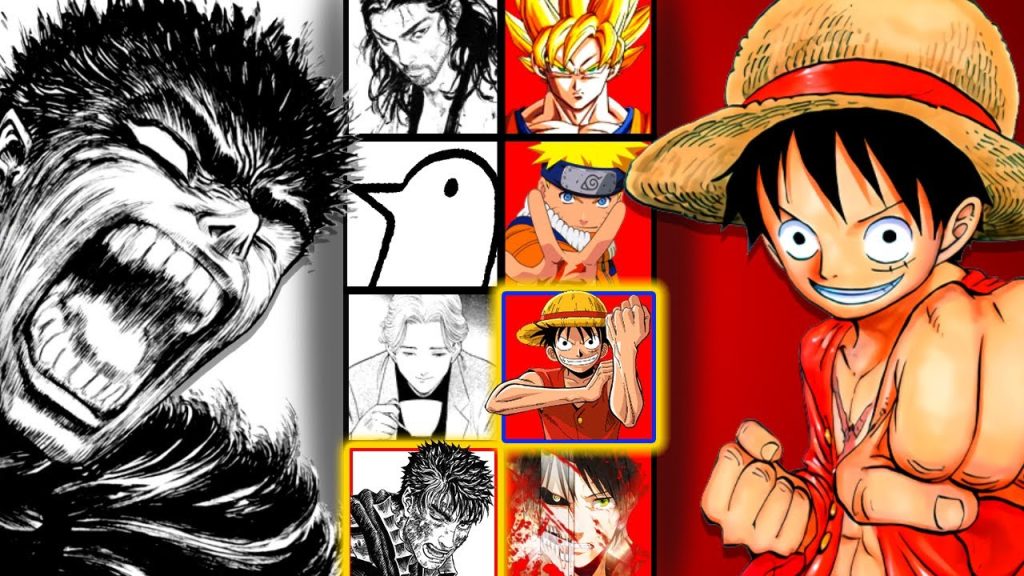Manga and anime are Japanese comic books and animated series, respectively. Manga are graphic novels with diverse genres, while anime brings these stories to life through animation. Both forms of entertainment originate from Japan and have gained global popularity. Manga Anime are integral parts of Japanese culture, influencing various aspects of society and entertainment worldwide.Manga and anime are two distinct but closely related forms of entertainment that have gained immense popularity worldwide. Manga refers to Japanese comic books or graphic novels, while anime is the animated counterpart, often adapted from manga or original stories. Together, they form a significant part of Japanese pop culture and have a profound influence on global entertainment.
History of Manga Anime
The history of manga and anime dates back to the late 19th century, with the introduction of Western-style comic strips in Japan. However, the modern form of manga emerged in the post-World War II era, with artists like Osamu Tezuka revolutionizing the medium. Anime gained prominence in the 20th century, with classics like “Astro Boy” paving the way for future generations of animators.

Characteristics of Manga Anime
Manga and anime are characterized by their distinctive art styles and storytelling techniques. Manga typically features black-and-white artwork, while anime brings these illustrations to life through animation. Both mediums cover a wide range of genres, including action, romance, fantasy, and science fiction.
Popularity and Global Influence
In recent years, manga and anime have experienced a surge in popularity worldwide. Thanks to the internet and streaming platforms, fans from different countries can access a vast library of manga and anime titles. This global reach has led to an increase in merchandise sales, conventions, and fan communities dedicated to manga and anime.
Different Genres of Manga Anime
Manga and anime encompass a diverse range of genres catering to various interests and demographics. Shonen targets young male audiences with action-packed stories, while Shojo is aimed at teenage girls and focuses on romance and relationships. Seinen and Josei cater to adult audiences with more mature themes and complex narratives.
Cultural Significance
Manga and anime play a significant role in shaping Japanese culture and identity. They reflect societal norms, values, and traditions, serving as a mirror to the collective consciousness of the nation. Moreover, manga and anime have become ambassadors of Japanese culture abroad, introducing audiences worldwide to Japanese customs, folklore, and aesthetics.
Manga Anime Industry
The manga and anime industry is a multi-billion-dollar business, encompassing publishing, animation studios, and merchandise. Major publishers like Shueisha and Kodansha dominate the manga market, while animation studios like Studio Ghibli and Toei Animation produce iconic anime films and series.
Impact on Other Media
The influence of manga and anime extends beyond their respective mediums, with adaptations into live-action movies, television shows, and video games. Popular manga and anime franchises often spawn a plethora of merchandise, including toys, clothing, and collectibles, catering to fans of all ages.
Manga Anime Fan Community
The fan community surrounding manga and anime is vibrant and diverse, with dedicated enthusiasts organizing conventions, cosplay events, and online forums to discuss their favorite series. Fandoms play a crucial role in promoting manga and anime, driving merchandise sales and generating buzz around new releases.
Challenges and Controversies
Despite their widespread popularity, manga and anime face several challenges and controversies, including issues of representation, censorship, and piracy. Debates surrounding cultural appropriation and stereotyping have sparked discussions about the ethical implications of certain manga and anime titles.
Future of Manga Anime
The future of manga and anime looks promising, with advancements in technology enabling creators to push the boundaries of storytelling and animation. As the global demand for Japanese pop culture continues to grow, manga and anime are poised to play an even larger role in shaping the entertainment landscape.
Impact on Entertainment Industry
The influence of manga and anime extends beyond the realm of entertainment, with Western filmmakers and artists drawing inspiration from Japanese pop culture. Elements of manga and anime can be found in Hollywood blockbusters, television shows, and even music videos, showcasing their global appeal.
Educational Value of Manga Anime
Beyond entertainment, manga and anime have educational value, offering insights into Japanese language, culture, and history. Many language learners use manga as a tool for studying Japanese, while anime provides a window into Japanese society and customs.
Conclusion
In conclusion, manga and anime are more than just forms of entertainment; they are cultural phenomena that have captivated audiences around the world. From their humble origins in Japan to their global influence today, manga and anime continue to inspire creativity, spark imagination, and bring people together across borders and cultures.
FAQs
Is manga the same as anime?
No, manga refers to Japanese comic books or graphic novels, while anime is the animated counterpart.
What are some popular genres of manga and anime?
Popular genres include shonen (action/adventure), shojo (romance), seinen (adult), and josei (women).
Are manga and anime only for children?
No, manga and anime cater to audiences of all ages, with titles ranging from children’s stories to mature themes.
How do I start reading manga or watching anime?
You can start by exploring popular titles recommended by fans or browsing online platforms dedicated to manga and anime.
Are there any cultural differences between manga and anime?
While manga and anime share many similarities, there are differences in storytelling techniques, visual styles, and audience demographics.








